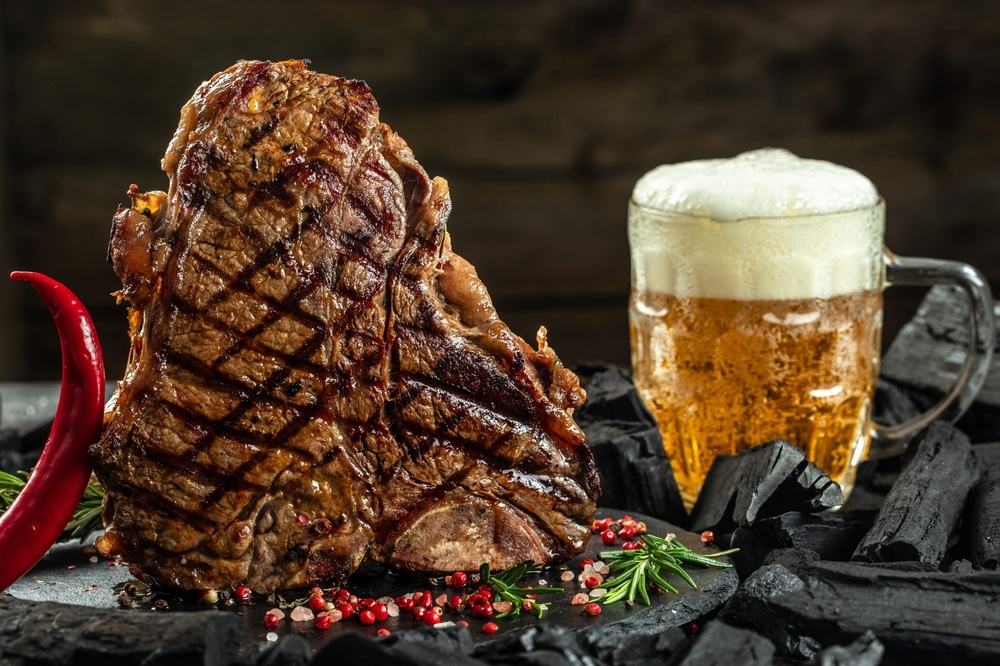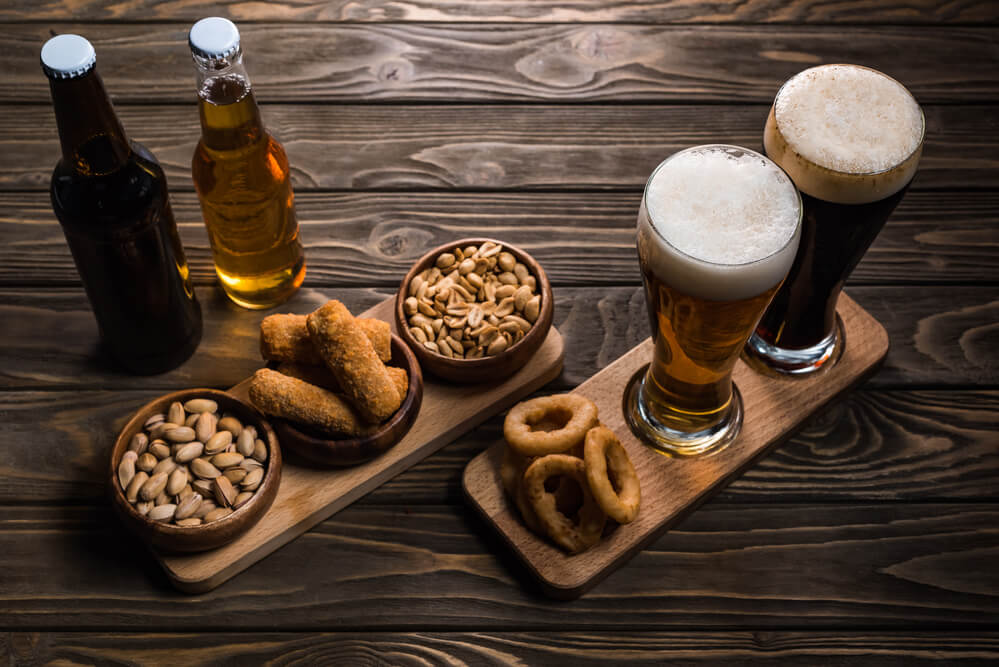What is Weizenbock? In this article, you will learn interesting facts about Weizenbock.
Weizenbock is a unique and intriguing style of beer that combines the characteristics of traditional German Bock beers with the distinctive flavors of wheat beers. By blending these two popular styles, Weizenbock offers a complex, full-bodied drinking experience that appeals to both newcomers and seasoned beer connoisseurs.
This fascinating ale takes its roots from the German brewing heritage and is notable for being a top-fermented wheat beer, which utilizes a large portion of wheat in its recipe and relies on Weizen ale yeast for fermentation. With a richly layered maltiness and strength that can be traced back to the earliest Bocks, Weizenbock has become an appreciated style within the beer world. Pale versions of Weizenbock range from gold to deep copper, while darker versions stretch from amber to dark brown, offering a wide variety for drinkers to explore.
Table of Contents
History of Weizenbock

The Weizenbock beer style originated in Germany, specifically in Bavaria, and combines the characteristics of wheat beers and traditional Bock beers. It was introduced in 1907 by the family-owned G. Schneider & Sohn brewery, located in Munich; they aimed to create a middle-ground between the rich, malty doppelbock and the popular wheat beer, otherwise known as weissbier.
For context, ale is a type of beer that uses top-fermenting yeast. Weizenbock, classified as a German-style wheat ale, is brewed mainly using wheat malt in combination with barley malt. Unlike the more common Hefeweizen, which has a pale golden hue, Weizenbock comes in various shades, ranging from pale gold to dark brown. Its flavor profile also differs, as it typically features high alcohol content (up to 7% ABV) along with bold and complex flavors, such as banana, clove, caramel, and malty sweetness.
One famous Weizenbock beer is the Aventinus, named after the Roman historian and Bavarian monk Johannes Aventinus. It was crafted by the G. Schneider & Sohn brewery and stands out for its unique flavor profile, which is characterized by rich banana, chocolate, malt, and raisin bread notes, accompanied by a creamy mouthfeel and a spicy, grainy finish, as detailed in All About Beer.
In summation, Weizenbock represents a remarkable fusion of traditional German beer styles, proudly leveraging its Bavarian heritage. By skillfully marrying the characteristics of wheat beer with the rich, malty profile of Bock beers, this innovative and unique ale has certainly garnered appreciation among beer enthusiasts worldwide.
Weizenbock Characteristics
Appearance
Weizenbock can range in color from pale gold to dark brown, often exhibiting a cloudy appearance due to the wheat and yeast used in its brewing process. The beer typically has a frothy, tan or white head that is quite persistent, adding to its visual appeal. SRM, or Standard Reference Method, ratings can range from amber to dark chocolate hues depending on the specific Weizenbock style.
Aroma
The aroma of a Weizenbock is a product of its unique combination of yeast and malt. The presence of Weizen ale yeast strain produces notes of clove and banana, while the wheat contributes a light, bready aroma. Darker versions of Weizenbock may also possess caramel, chocolate, or roasty malt scents, sometimes accompanied by the subtle smell of dark fruits. Esters, which are produced during fermentation, also contribute to the beer’s overall fruity and spicy character.
Mouthfeel and Body
This German-style wheat ale has a medium-full to full body, with a creamy and smooth mouthfeel. The carbonation level in Weizenbock can vary, but it usually leans towards being well-carbonated, which contributes to its lively, effervescent sensation on the palate. Despite its higher alcohol content, which may range from 6.9% to 9.3% ABV, Weizenbock remains a pleasantly drinkable and refreshing beer.
Flavor
Weizenbock’s flavor profile is a delightful blend of wheat, yeast, and malt characteristics. The wheat imparts a soft, bready foundation, while the top-fermenting Weizen ale yeast creates notes of clove and banana. Crystal and caramel malts often make an appearance in darker versions, lending flavors of toffee, chocolate, and roastiness. Dark fruits such as raisins or plums can also be present in the taste, adding a layer of complexity to the beer. Despite having a malty and rich profile, Weizenbock still showcases a balanced bitterness with IBUs ranging from 15 to 35.
Styles and Variations
German-Style Weizenbock
The German-Style Weizenbock is a strong, malty, fruity, wheat-based ale that combines elements of both Weissbiers and Doppelbocks. It is known for its wheat-rich recipe and top-fermenting Weiss yeast1. This style typically has a higher alcohol content compared to traditional Hefeweizens and features a richly layered maltiness, reminiscent of a Doppelbock. The color of these beers can range from pale to dark, depending on the malt used.
Dunkelweizen
Dunkelweizen, or “dark wheat” in German, is another variation of a wheat beer with a darker color due to the use of darker malts2. This style usually retains the fruity and spicy yeast flavors found in pale Weissbiers, but with a distinct dark malt character bringing in notes of chocolate and caramel. The IBU (International Bitterness Units) of a typical Dunkelweizen ranges from 10-18, so they tend to be less bitter than Weizenbocks.
Doppelbock
Doppelbock is a strong, dark, and malty German-style lager, originating from the Bavarian tradition of brewing hearty beers to serve during times of fasting3. Known for their rich malt profiles, Doppelbocks often showcase flavors of toasted bread, caramel, and chocolate. These beers tend to have a higher alcohol content, ranging from 7-12% ABV, and a higher IBU compared to both Weizenbocks and Dunkelweizens, ranging from 16 to 26. Doppelbocks are bottom-fermented, making their yeast characteristics less pronounced compared to wheat beers.
Ingredients and Brewing Process

Malt Profiles
Weizenbock is a German wheat beer that has a rich malt profile, which primarily consists of wheat and Munich malts. The use of Munich malt contributes to the beer’s bready malt character, while other specialty malts such as pale chocolate and caramel malts can be used to add complexity. The resulting maltiness often includes notes of breadiness, toffee, and toasted flavors.
Hops and Hop Additions
Hops are used sparingly in Weizenbock, as the beer’s dominant flavors come from the yeast and malt profiles. German hop varieties such as Saaz, Hallertau Mittelfrüh, Tettnang, Spalter, German Magnum, German Northern Brewer, and Saphir are often suitable for Weizenbock recipes. Hops are primarily added for bittering, with the typical International Bittering Units (IBUs) ranging from 15 to 30. Hop aroma and flavor are usually kept minimal, allowing the yeast esters and malt flavors to take center stage.
Yeast Strains
A key component of Weizenbock beers is their yeast strains, which produce unique fruity esters and spicy phenols. These yeast strains are typically top-fermenting, which is characteristic of German weissbier and hefeweizen styles. Ale yeast strains, especially those suited for weizen ales , are used to promote the desired banana, clove, and fruity aromas typical in Weizenbock beers. Yeast sediment, derived from the unfiltered nature of the beer, enhances the beer’s cloudiness and flavor profile.
Water and Brewing Conditions
The water used to brew Weizenbock has little impact on the finished beer’s overall taste and aroma. Instead, the brewing process itself plays a more significant role in defining the beer’s characteristics. Brewing conditions involve a standard mash and boil, with some brewers recommending a single-step infusion mash at or just below 153°F. A protein rest at around 122°F can be helpful in breaking down the wheat’s excess protein content.
During fermentation, it’s essential to maintain a steady temperature to avoid the production of hot alcohols. A fermentation temperature of around 71°F (22°C) is recommended; however, if temperature control is difficult, a cooler temperature is preferable.
In summary, Weizenbock is a distinctive, rich, and flavorful German wheat beer. Its brewing process emphasizes malt profiles, minimal hop additions, unique yeast strains, and careful fermentation conditions for the best results.
Food Pairings and Pairing Suggestions

Weizenbock is a rich and flavorful beer, with characteristics such as dark fruits, vanilla, and prune, resulting in a fruity and rich taste. When it comes to food pairings, it’s essential to choose dishes that complement and highlight these flavors.
A popular choice for pairing with Weizenbock is roasted or grilled meats, as their hearty flavors and textures accentuate the beer’s maltiness. Try serving Weizenbock with a succulent pork roast, grilled sausages, or even a smoked brisket. The rich, savory flavors of these dishes harmonize beautifully with the fruity and vanilla notes in the beer.
In terms of side dishes, opt for options that complement the beer’s dark fruit character. Consider dark leafy greens like kale or Swiss chard sautéed in garlic and olive oil. The earthiness and slight bitterness of these vegetables help to balance the sweetness of the beer. Roasted root vegetables such as sweet potatoes, carrots, or parsnips, seasoned with herbs like rosemary and thyme, also make a lovely addition to the plate.
For cheese pairings, look for stronger, more pungent varieties that can stand up to the robust flavor profile of the Weizenbock. Gruyère, for instance, with its nutty and slightly sweet taste, pairs well with the beer’s caramel and dark fruit notes. Blue cheeses like Roquefort or Stilton also make for an exciting pairing, as their creamy texture and distinct flavor contrast beautifully with the beer’s fruity and spicy qualities.
When it comes to dessert, lean into the beer’s prune, vanilla, and dark fruit flavors by selecting fruit-based desserts, such as poached pears, fig and almond tarts, or a nice slice of plum cake. These desserts’ subtle sweetness highlights the fruit notes in the Weizenbock, creating a harmonious and satisfying finish to the meal.
Notable Weizenbock Brews and Brands
One of the most respected and well-known Weizenbock brewers is G. Schneider & Sohn, a family-owned brewery in Bavaria, Germany. They have been specializing in wheat beers since the 19th century and are credited with introducing the Weizenbock style in 1907. They aimed to combine Bavarian fondness for strong, dark, and malty beers with their love for weissbier source.
One of G. Schneider & Sohn’s most popular Weizenbock offerings is Aventinus, which has been in production since 1907. Aventinus boasts a complex flavor profile featuring notes of banana, clove, and malt, characteristic of the Weizenbock style. The beer is appreciated for its full-bodied mouthfeel and a rich, warming quality, ideal during colder months.
Another highly regarded Weizenbock is Vitus by the German brewery Weihenstephaner. Though a newer entry in their lineup, Vitus has already made an impression on the beer community for its balance of classic flavors and modern brewing techniques. Vitus features rich maltiness, fruity undertones, and a smooth finish that has earned it several accolades, including the prestigious World Beer Award.
In addition to these well-known brands, craft breweries worldwide have also ventured into the realm of Weizenbocks. Breweries such as Sierra Nevada in the United States and Erdinger in Germany have developed their interpretations of this traditional Bavarian style with variations incorporating elements like smoked malts or extra hops.
With the growing interest in Weizenbock beers, the market continues to thrive, offering consumers a wealth of options to explore, from traditional German staples to innovative, modern takes on this classic wheat beer style. No matter which brew you choose, the Weizenbock’s unique characteristics and rich history will surely leave you with an unforgettable tasting experience.



